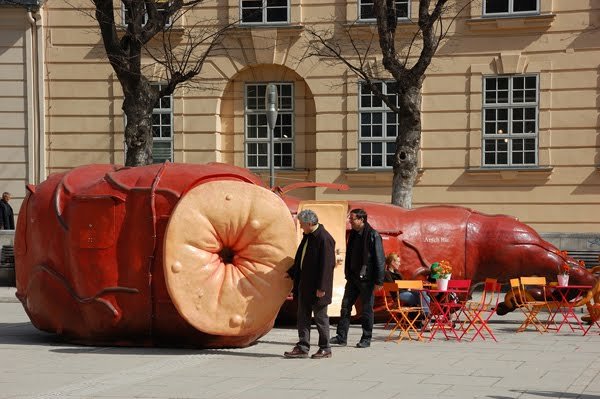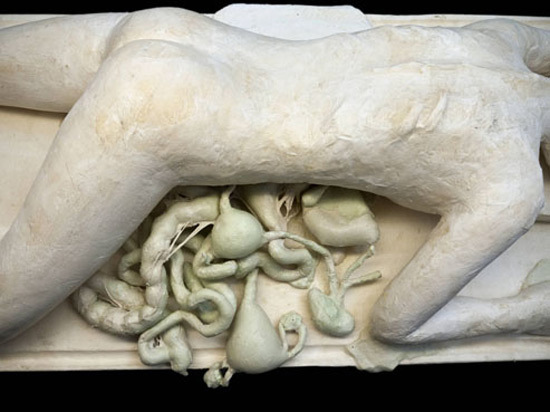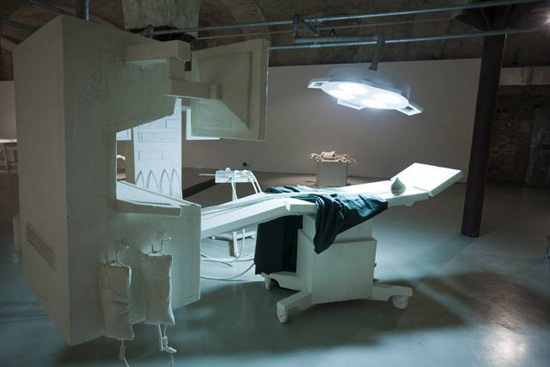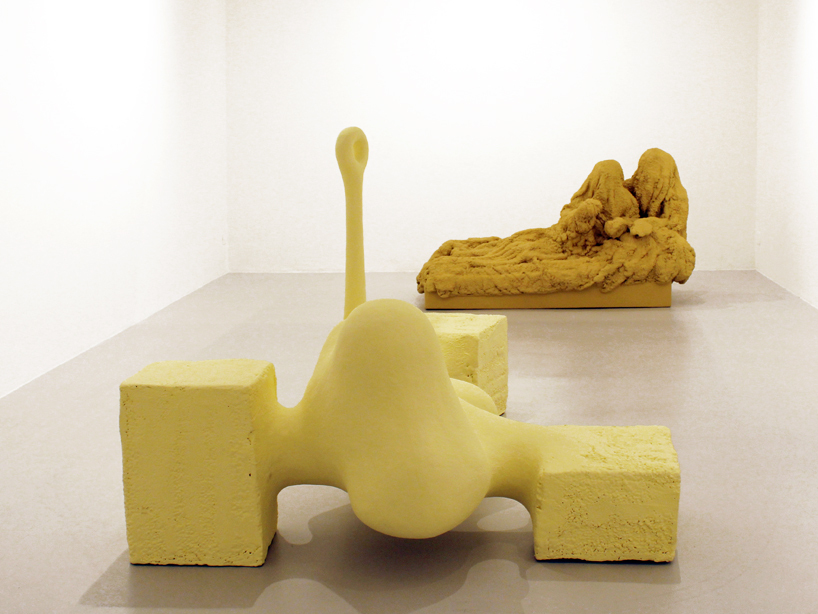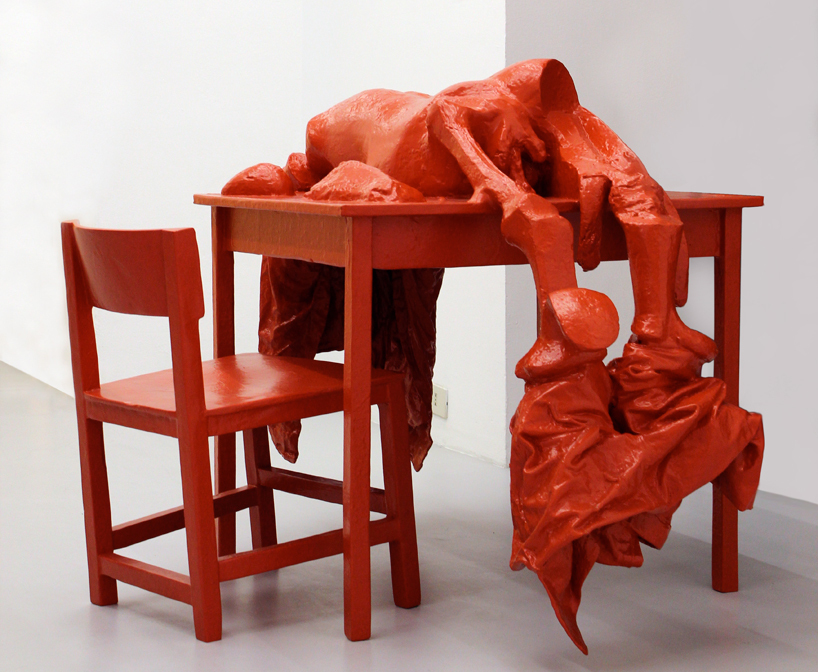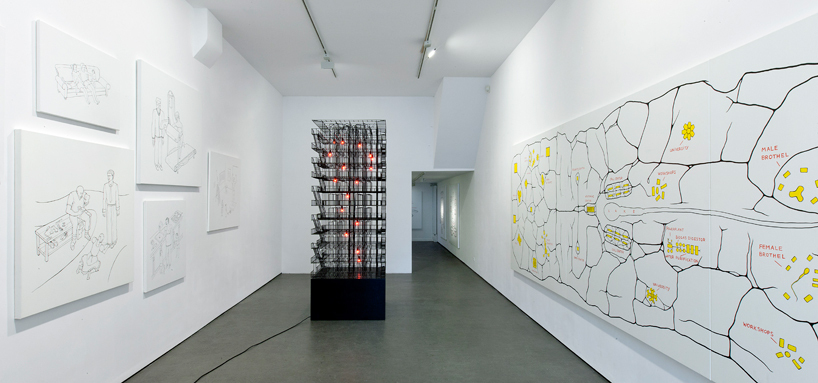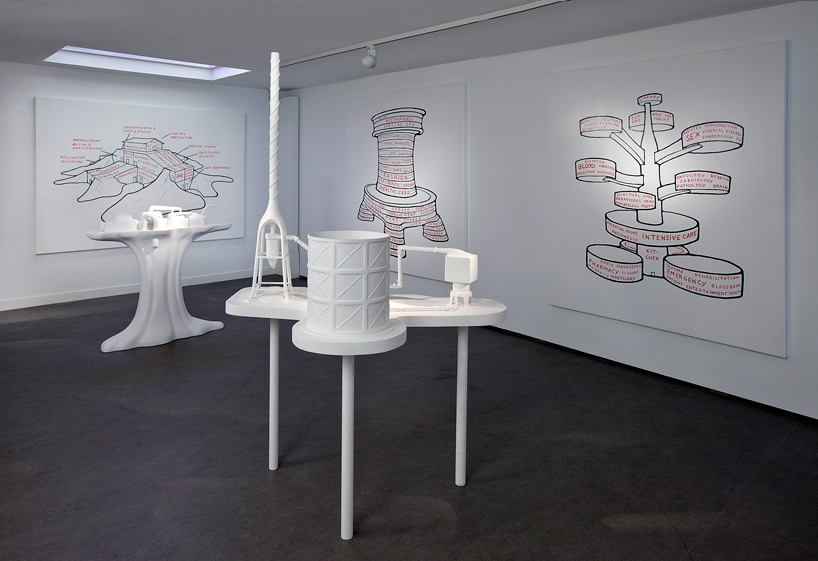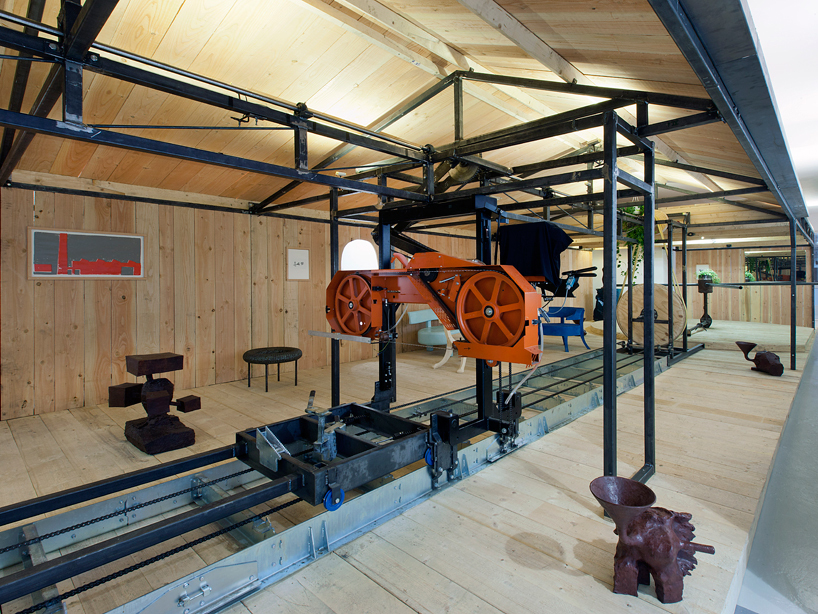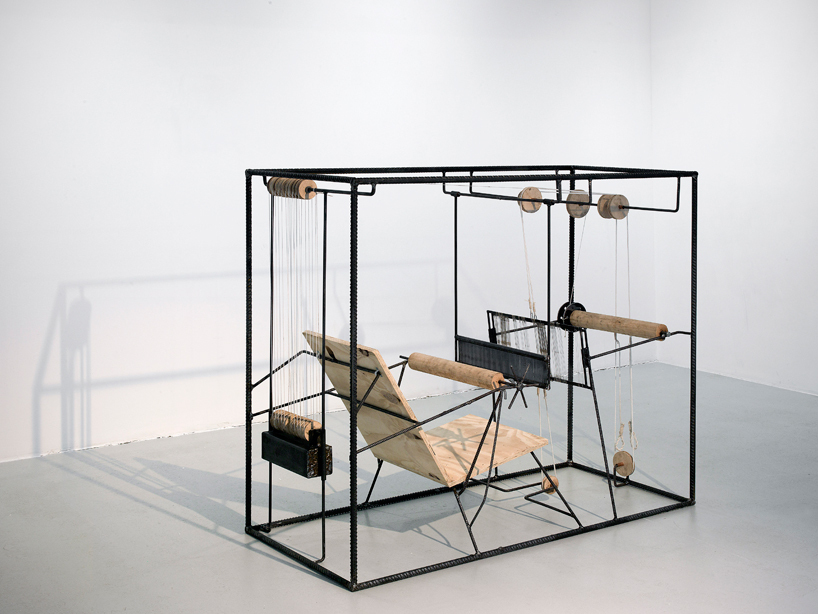The present ecological crisis seems to demand a paradigm shift in patterns of consumption and the methods by which we handle the mess we’ve made. But how uncompromising should our strategies be? The Dutch artist Joep van Lieshout, working under the name Atelier van Lieshout, asks this question by proposing numerous solutions – some more realistic than others, but almost all of them unsettling. Cannibalizing the bloodless logic of design and urban planning, his work affects the marriage of best intentions and unsavory methods. Curator Nadim Samman visited van Lieshout in his Rotterdam studio to talk about his recent work and decidedly provocative approach.
Your work frequently sets the themes of sustainability, recycling, and efficiency within a disturbing, dystopian frame. It can seem as though you are suggesting that the technical pursuit of these goals can engender some exceedingly unsustainable ethical positions. How should one read a series like “Cradle to Cradle,” for instance – a vision of a closed loop of production and reuse in which humans are raw material?
The goal is to create awareness. People are easily fixated upon things that can seem important while ignoring more significant issues. For example, everyone is currently super-obsessed by carbon dioxide – but there are bigger problems to think about, like over-consumption and the death of privacy. Before our world will flood and the ice bears go extinct, the human race may already be wiped out. What I try to do is to disturb regular thinking. Naomi Klein tells an interesting story in No Logo: She says something like “when we were at university everyone was thinking, talking and taking action for gender-related issues, while behind our backs something momentous was happening – industry was globalized, with production outsourced to far away countries.” Similar general failures of perception are visible now. My work revolves around this discrepancy.
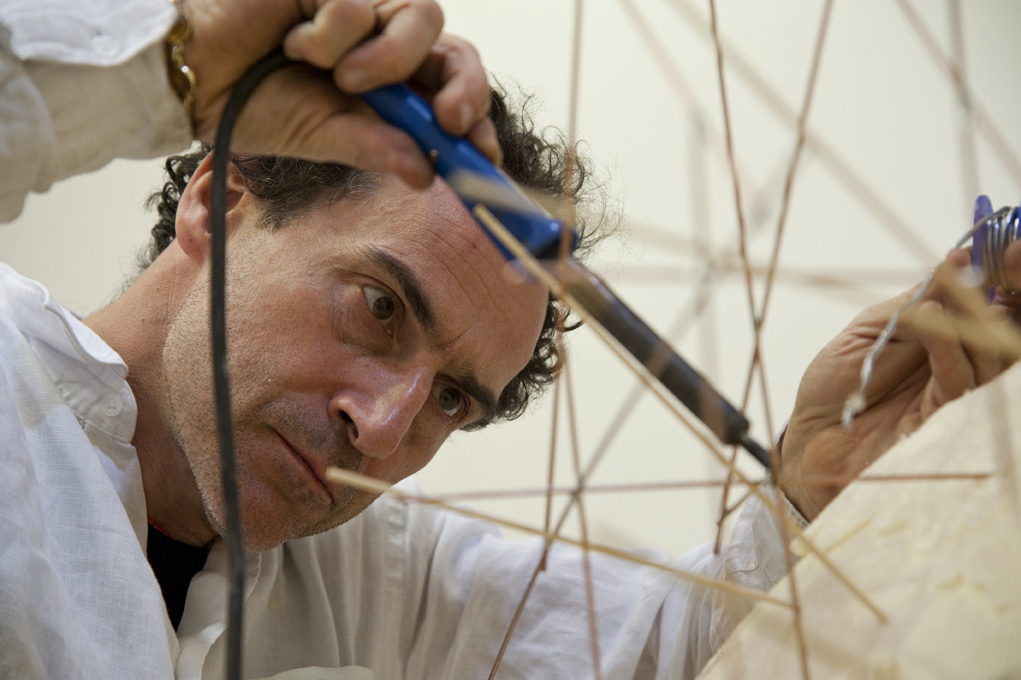
To go back to recycling – are you saying it’s not a good thing?
Our society has become hyper-rational, with many decisions made on the basis of Excel sheet outcomes and calculations. I have a love-hate relationship with rationality. On the one hand serious rationality can improve life for humans and the world, but at the same time it can be very dangerous. In the universe of Cradle to Cradle I have hyper-rationalized all decisions, leaving no ethics, only financial and sometimes crazily instrumental decisions. The series is a warning about society’s rationalization.
What does your current series, “New Tribal Labyrinth,” bring to this thinking?
My works have more than one layer of meaning. That said, one agenda in New Tribal Labyrinth is to recreate appreciation for raw materials and simple products. The whole world is obsessed by merchandise, consumption, and material goods that can be bought, sold and discarded for something newer and better. There is little awareness of products and where they come from and little appreciation for raw material. Materials and products are cheap; labour is extremely expensive. This is not a sustainable system. Here in the West we are all in the service industry. There is hardly any agriculture, hardly any production – basically everyone is in sales or marketing. We have to ask ourselves how long this can continue. I want to re-invent real industry, to re-invent how to make steel, how to make textiles, and bring a new spirit to these materials. If you make your own steel then the material becomes important to you. If you make something yourself it is for life.
In “New Tribal Labyrinth” rituals are important…
Yes, in a way the series is a comment on religion, which seems to be very far away from daily life today. Food or environment is the new religion. I talk about worshipping nature, worshipping industrial products, new rituals. At the same time I pervert religion because my new rituals are a little cruel, or have to do with cannibalism – breaking taboos.
Speaking of taboos – A lot of your works that have taken up the theme of recycling have revolved around feces or, to put it bluntly, eating shit. In “New Tribal Labyrinth” the citizens of this world are engaged in farming insects for food. Why are you drawn to the unpalatable and the alimentary when making works that take on a social/economic issues?
Good question. I think it is curiosity. Maybe it is also a comment against hypocrisy. Human beings tend to be hypocrites and forget a lot of things.
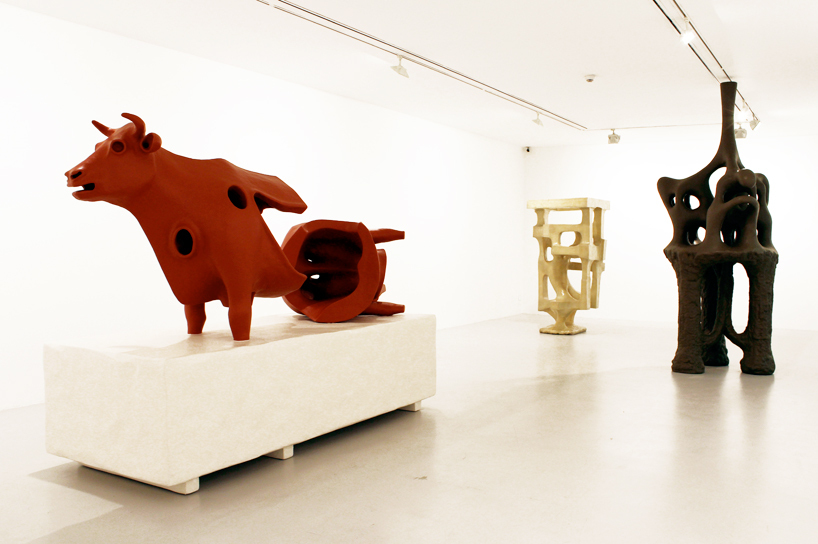
Where does hypocrisy figure in the ideology of recycling?
It’s very clear – the biggest producer of carbon dioxide is the human being. If you want to do something about carbon dioxide then start killing people. Kill them and then they won’t pollute so much. The best thing would actually be to sterilize people at birth. People don’t realize that. They blame the car, they don’t blame themselves.
You’re being provocative. Is this really your position?
I don’t know if it is really my position but I am challenged by the idea. For example, people who are very old and sick can be kept alive for a long time. Nowadays it is possible to live to a hundred. This costs a lot of money, though, which has to be paid by someone. It also pollutes a lot. Why don’t we give people an option at the age of seventy: “you can choose to keep on living for the next thirty years and we’ll take care of you, or you can commit suicide voluntarily and you’ll get a rebate or money for your children.” Perhaps you get five years on a Caribbean island and then you step out. Why not? This kind of thinking is an edge or tripping point in my work, having to do with morality or ethics and non-ethics. On the one-hand I propose to make new factories for ethical reasons. On the other hand I propose that people might kill themselves and get tax rebates. This whole question about the relationship between rationality and ethics is one of my key concerns.
- Nadim Samman is an independent curator and art historian based in London and Berlin. He is currently the Curator in Residence at Das Weisse Haus/TBA21-Academy in Vienna.
nadimsamman.com




